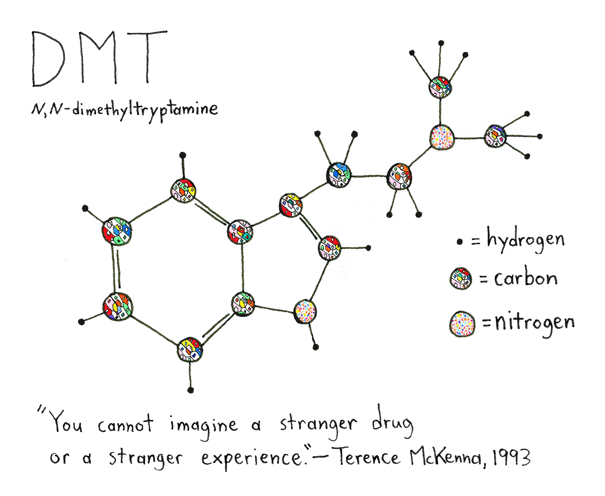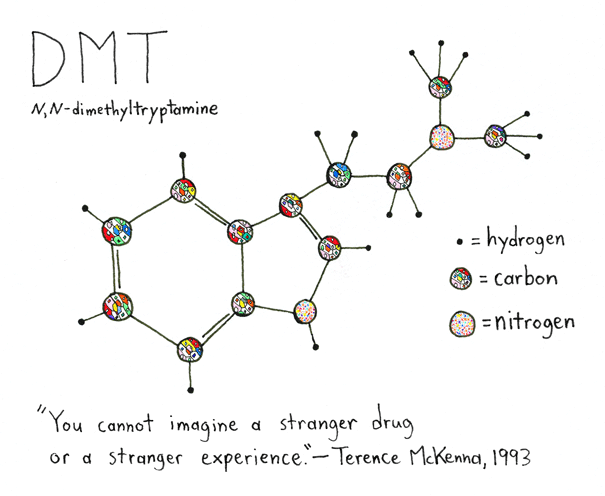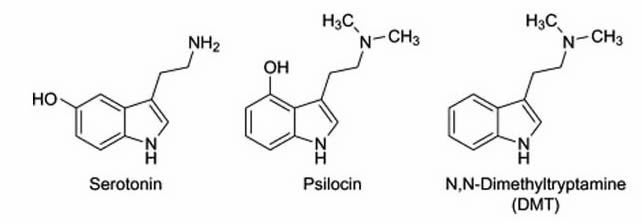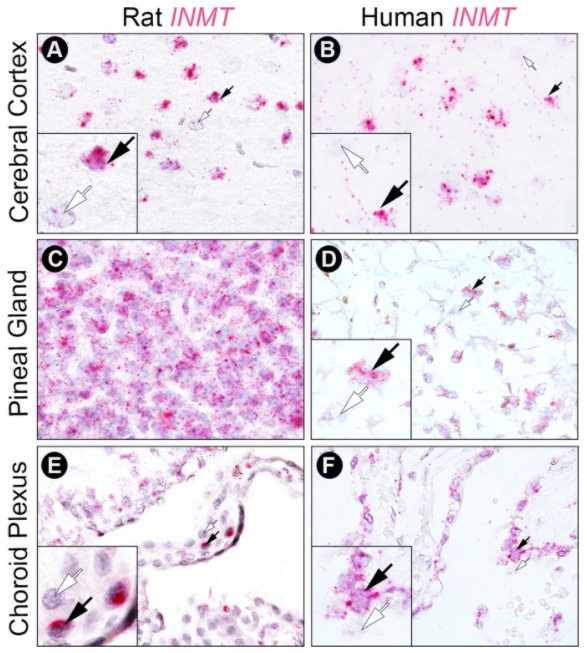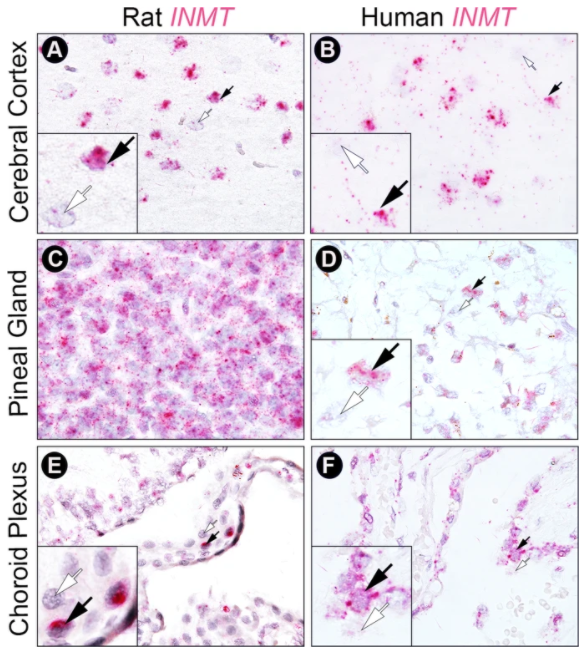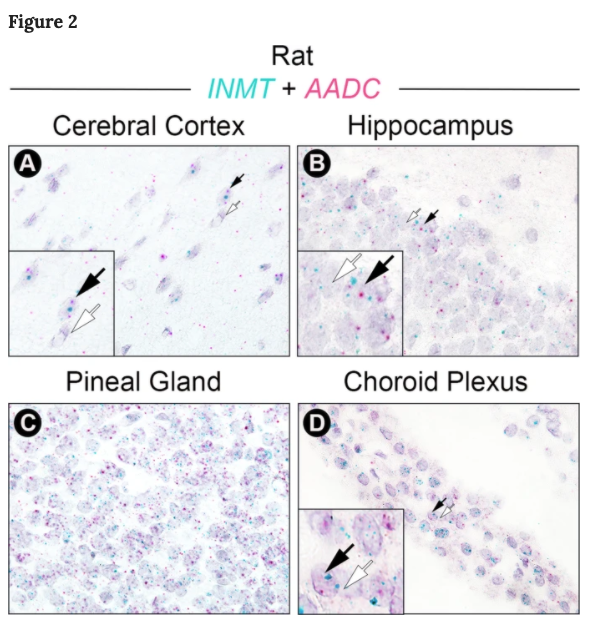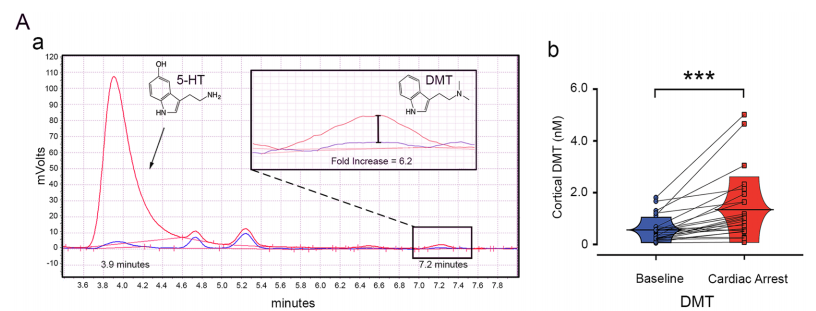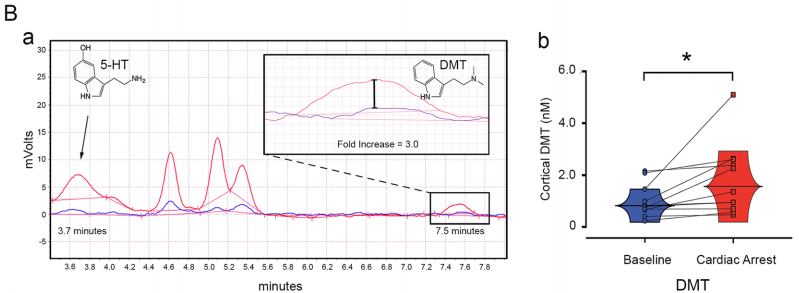#ScienceBreakdown: Is DMT produced by the pineal gland in the mammalian brain?
I often see this claim on the internet and am surprised how often I& #39;m asked about it. Below, a breakdown of a 2019 study in (mostly) rats looking at this.
1/n
#psychedelics https://www.nature.com/articles/s41598-019-45812-w">https://www.nature.com/articles/...
I often see this claim on the internet and am surprised how often I& #39;m asked about it. Below, a breakdown of a 2019 study in (mostly) rats looking at this.
1/n
#psychedelics https://www.nature.com/articles/s41598-019-45812-w">https://www.nature.com/articles/...
For those that don& #39;t know, DMT is arguably the most powerful hallucinogen. It& #39;s typically smoked/vaporized. Subjective effects are intense but short-acting (minutes). The peak minutes produce a completely transformed experience, utterly alien compared to normal consciousness.
2/
2/
First, some background on the science:
#DMT has been detected in mammalian tissues before. Usually this has been outside the brain, in very small amounts, making it questionable whether it& #39;s physiologically relevant or just a metabolic byproduct.
3/
#DMT has been detected in mammalian tissues before. Usually this has been outside the brain, in very small amounts, making it questionable whether it& #39;s physiologically relevant or just a metabolic byproduct.
3/
DMT looks a lot like the neurotransmitter serotonin and other tryptamine #psychedelics like psilocin.
If you want to learn more about these compounds and how they affect the brain, check out this article I wrote a few years ago:
http://sitn.hms.harvard.edu/flash/2015/worth-the-trip-psychedelics-as-an-emerging-tool-for-psychotherapy/
4/">https://sitn.hms.harvard.edu/flash/201...
If you want to learn more about these compounds and how they affect the brain, check out this article I wrote a few years ago:
http://sitn.hms.harvard.edu/flash/2015/worth-the-trip-psychedelics-as-an-emerging-tool-for-psychotherapy/
4/">https://sitn.hms.harvard.edu/flash/201...
If #DMT is produced by the brain naturally, at significant levels, that& #39;s very interesting. Lots of cool questions worth asking, but first thing& #39;s first: is at actually in there? If so, where?
That& #39;s what this 2019 study in rats looked at.
5/
That& #39;s what this 2019 study in rats looked at.
5/
First, they look at where AADC and INMT are expressed in rat and human brains. These are enzymes. Both are needed to synthesize DMT, so looking for where these enzymes are is a first step to identify where you might look for actual #DMT present in the brain.
6/
6/
They look for INMT in rat and human brain tissues in three places: visual cortex, pineal gland, and choroid plexus (cells produce cerebrospinal fluid).
Pinkish blobs in figure are cells w/ INMT. Some cells have it. Notice differences between brain regions and rat vs. human
7/
Pinkish blobs in figure are cells w/ INMT. Some cells have it. Notice differences between brain regions and rat vs. human
7/
In rat tissue, they are able to look for where both INMT and AADC are expressed. These are candidate cells where DMT could be synthesized.
They find INMT + AADC co-localized in neurons in four places: visual cortex, hippocampus, pineal gland, and choroid plexus.
8/
They find INMT + AADC co-localized in neurons in four places: visual cortex, hippocampus, pineal gland, and choroid plexus.
8/
Next, they use a technique called microdialysis to measure DMT levels in rat visual cortex. Looked at DMT levels (and serotonin) in normal rats (blue) and rats that have undergone cardiac arrest (red).
DMT is detected in rat visual cortex. Higher levels after cardiac arrest.
9/
DMT is detected in rat visual cortex. Higher levels after cardiac arrest.
9/
Next, they did same experiment, except in rats where the pineal gland was removed. The find the same basic result for DMT: it is present at comparable levels in rats without a pineal gland, and is found at higher levels following cardiac arrest.
10/
10/
#DMT levels they measured in rat visual cortex were *not* different in normal rats vs. those lacking a pineal gland, indicating that pineal is not producing the DMT present in visual cortex.
DMT levels were found at roughly half the levels of serotonin (5-HT).
11/
DMT levels were found at roughly half the levels of serotonin (5-HT).
11/
Overall, the major result here is that #DMT can be detected in the mammalian (rat) brain. They found it in visual cortex, and it may be found elsewhere.
It was measured at lower levels than serotonin but still comparable to levels of major neurotransmitters.
12/
It was measured at lower levels than serotonin but still comparable to levels of major neurotransmitters.
12/

 Read on Twitter
Read on Twitter